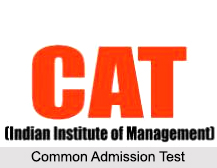 Indian entrance examinations are conducted by several educational institutions, as a measure to select eligible students for admission in various courses. These exams are conducted at different level of education, but they are more common at higher level of education. Indian entrance examinations are means of competitive assessment of students. A proper strategy needs to be followed by the students for cracking these exams. After clearing the written test, the short-listed candidates need to clear the group discussion round and the personal interview round. Some institutes participate in common entrance tests, whereas some conduct their own entrance test examinations. Dates and notifications related to the examinations vary, as per the commencement of various sessions. Students are informed by the concerned colleges and universities well in advance.
Indian entrance examinations are conducted by several educational institutions, as a measure to select eligible students for admission in various courses. These exams are conducted at different level of education, but they are more common at higher level of education. Indian entrance examinations are means of competitive assessment of students. A proper strategy needs to be followed by the students for cracking these exams. After clearing the written test, the short-listed candidates need to clear the group discussion round and the personal interview round. Some institutes participate in common entrance tests, whereas some conduct their own entrance test examinations. Dates and notifications related to the examinations vary, as per the commencement of various sessions. Students are informed by the concerned colleges and universities well in advance.
 Reasons for Conducting Indian Entrance Examinations
Reasons for Conducting Indian Entrance Examinations
The main motive behind holding the entrance examinations is to judge a student on the basis of his ability, sharpness, knowledge, observation, creative potential, understanding of various concepts, etc. to select the right candidate for the concerned course. These tests are designed in such a way that they can test the aptitude of the individuals. Architecture, engineering, medicine finance, designing, etc. are some of the most favored career streams of students. In order to earn a specialized degree in these areas of study, students need to clear the entrance test exams. Indian entrance examinations are the favored mode of admission due to the huge level of impartiality that they ensure. The whole system or pattern of admission tests has helped ambitious students in appearing in multiple entrance exams. The scores attained in the entrance tests determine admission in desired college and selection of the desired professional degree. The content and scoring system of the entrance tests vary from one course to another. Entrance exams also ensure marginal qualitative improvement of students. They can help to bring about personality development of the students. They enhance career prospects, as their preparation demand elaborate study and thorough dedication.
 With the increasing level of competition and demand from the challenging job market, the need of acquiring a degree from a reputed college has also increased. With rising contests among the students, entrance exams have become the most preferred way of admitting students to the several degree courses, both at undergraduate and postgraduate levels. Entrance examinations hold special importance in case of professional degree courses. It can be said that for building a successful and steady career, the students are required to prepare extensively for entrance examinations and other competitive exams, at a particular stage of their lives.
With the increasing level of competition and demand from the challenging job market, the need of acquiring a degree from a reputed college has also increased. With rising contests among the students, entrance exams have become the most preferred way of admitting students to the several degree courses, both at undergraduate and postgraduate levels. Entrance examinations hold special importance in case of professional degree courses. It can be said that for building a successful and steady career, the students are required to prepare extensively for entrance examinations and other competitive exams, at a particular stage of their lives.
Types of Indian Entrance Examinations
For different fields of study, different entrance examinations are conducted. Some of these entrance tests are Entrance Tests for Management, Common Admission Test (CAT), Management Aptitude Test (MAT), Graduate Management Admission Test (GMAT), Joint Entrance Examination (JEE), Entrance Tests for Engineering, Medical Entrance Examination, Medical College Admission Test (MCAT), All India Pre Medical Tests (AIPMT), Law School Admission Test (LSAT), Graduate Record Examinations (GRE), Commonwealth Executive Master of Business Administration Test (CEMAT), Common Entrance Examination for Design (CEED, National Aptitude Test in Architecture (NATA and Armed Forces Medical College (AFMC). At the state level, students need to clear the common entrance exams of the concerned states. Some of the International Examinations are International English Language Testing System(IELTS), Scholastic Aptitude Test (SAT) and Test of English as a Foreign Language (TOEFL).








